Half a century of bloody terror ends with the fall of the Assads, with Syria’s fate in major doubt
As Western countries, Syria’s allies Russia and Iran, and border nations rapidly reassess the fallout of the shifting sands of the Middle East, the whereabouts of Bashar al-Assad is unknown.
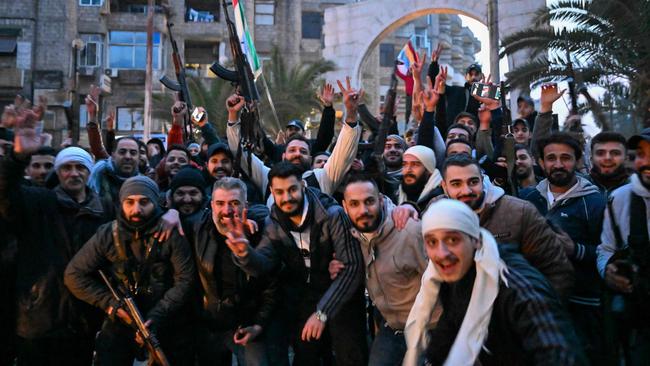
The Syrian government and the half-century rule of the Assad family has drastically collapsed after a lightning offensive by rebels took the capital, Damascus, on Sunday, throwing the Middle East into turmoil and threatening Iran and Russia’s grip on the region.
Fighters and supporters congregated around Ummayad Square in the centre of the city, standing on an abandoned military tank and singing in celebration. Some 10km away, a statue of Bashar al-Assad’s father – the infamous dictator Hafez al-Assad – was destroyed by jubilant rebels joined by the minority Druze militia chanting “Freedom!”
As Western countries and border nations rapidly reassess the pronounced fallout of the shifting sands of the Middle East, the whereabouts of Assad was unknown, with him believed to have fled the country.
A fighter jet, an Illyushin76 aircraft with flight number Syrian Air 9218, left Damascus airport around the same time as rebel forces took control and followed an unusual flight path, flying east and then north before radar was lost near the newly captured city of Homs.
The dramatic end of Assad’s iron-fisted regime in less than a fortnight of rebellion is a significant blow to his allies in Moscow and Tehran, and a seismic eruption in the Middle East, already reeling from Israel’s take-down of Lebanese terror group Hezbollah and the ongoing conflict in Gaza.
Border countries began redeploying forces on borders: Israel sent reinforcements to the Golan Heights and there was some skirmishes in the Quneitra area.
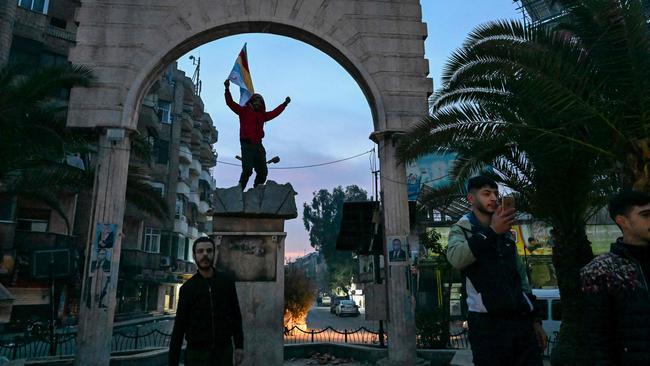
Turkey has been sympathetic to the Syrian rebel cause, wanting to return the near four million Syrian refugees it houses, but it faces unrest on Syria’s northeast border where Kurdish factions led by the US-backed Syrian Democratic Forces remain in control.
By any measure, the Syrian rebel advance has been breathtaking. They faced little opposition after beginning attacks on November 27 from Idlib, taking Aleppo, the second-largest city in Syria, then Hama, the fourth-largest, and then Homs, the third-largest before the final assault on the capital.
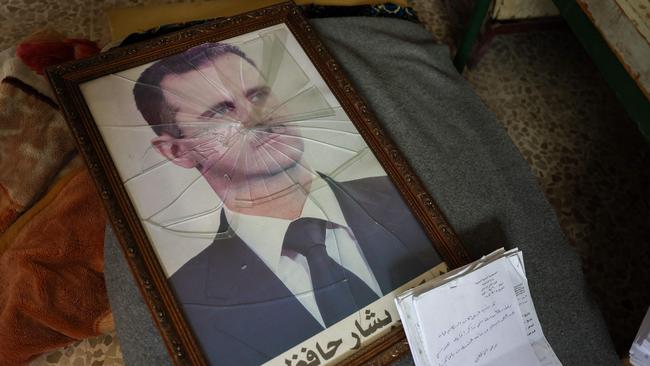
The latest advances were being made towards an area controlled by the US forces.
US president-elect Donald Trump called on Vladimir Putin “to act” with the assistance of China to end the war in Ukraine now that Assad is gone in Syria.
Mr Trump said on a social media post: “Assad is gone. He has fled his country. His protector, Russia, Russia, Russia, led by Vladimir Putin, was not interested in protecting him any longer. There was no reason for Russia to be there in the first place. They lost all interest in Syria because of Ukraine, where close to 600,000 Russian soldiers lay wounded or dead, in a war that should never have started, and could go on forever.”
Mr Trump added that Russia and Iran are in a weakened state right now, one because of Ukraine and a bad economy, the other because of Israel and its fighting success.
He said Ukrainian leader Volodymyr Zelensky and Ukraine “would like to make a deal and stop the madness” after losing “ridiculously” 400,000 soldiers, and many more civilians.
Mr Trump called for an immediate ceasefire and for negotiations should begin.
He added: “Too many lives are being so needlessly wasted, too many families destroyed, and if it keeps going, it can turn into something much bigger, and far worse. I know Vladimir well. This is his time to act. China can help. The world is waiting!”
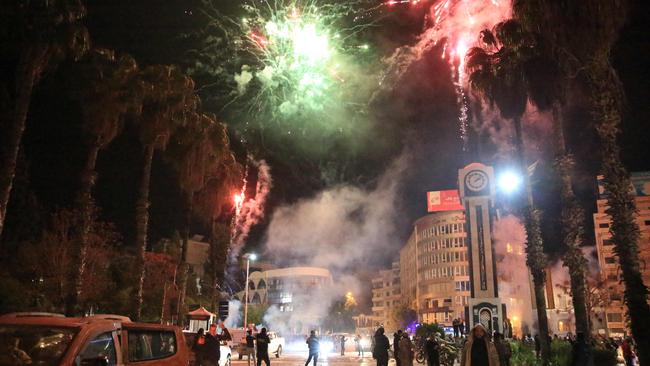
The White House said US President Joe Biden was closely monitoring “the extraordinary events in Syria and staying in constant touch with regional partners”.
Mr Putin will have to make strategic decisions to keep the Russia’s Hmeimim air base in Syria’s Latakia province and the country’s only naval facility in the Mediterranean at Tartous.
Qatar, Saudi Arabia, Jordan, Egypt, Iraq, Iran, Turkey and Russia had earlier issued a joint statement from the Doha Forum that a political solution was needed to stop military operations and protect civilians in Syria.
Russian Foreign Minister Sergey Lavrov said in Doha at the weekend “It’s inadmissable to allow the terrorist group to take control of the lands in violation of agreements”, adding that Russia “would help the Syrian army counter the attacks”.
The situation today, where the Syrian army, much demoralised, has walked away is very different to when Russia propped up Assad in 2015.
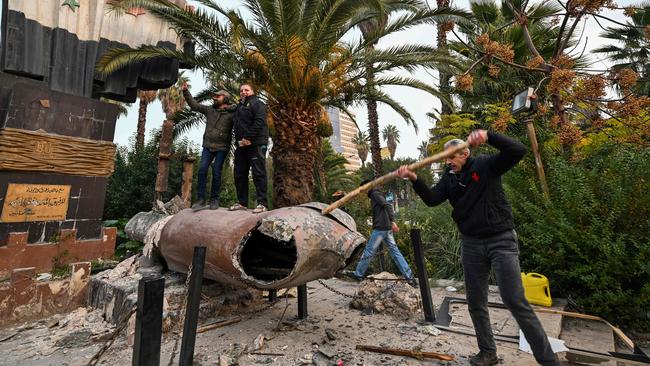
The rebel forces, led by Hayat Tahrir al-Sham (HTS), said on Telegram: “After 50 years of oppression under Baath rule, and 13 years of crimes and tyranny and (forced) displacement … we announce today the end of this dark period and the start of a new era for Syria.”
HTS leader Abu Mohammed al-Jolani said all state institutions would remain under the supervision of Assad’s prime minister until they were handed over officially. He banned all celebratory gunfire.
Syrian Prime Minister Mohammed Ghazi Jalali said he would remain in his Damascus home and the government would “co-operate” with the opposition and hand over its functions in a peaceful transition of power.
The Syrian Arab army command notified its troops of “the fall of the regime” shortly after the rebels had taken control of the airport and the Ministry of Internal affairs in Damascus.
The army’s heavily armed and feared Fourth Division, led by Assad’s brother Maher, was missing and some members were reported to have joined civilians fleeing to the west coast of the country. Syrian army commanders fled for the coastal strip in helicopters from the Homs Shuairat military base after rebels had earlier captured that city.
Lebanese outlets reported that the Syrian army had abandoned all its border posts with Lebanon.
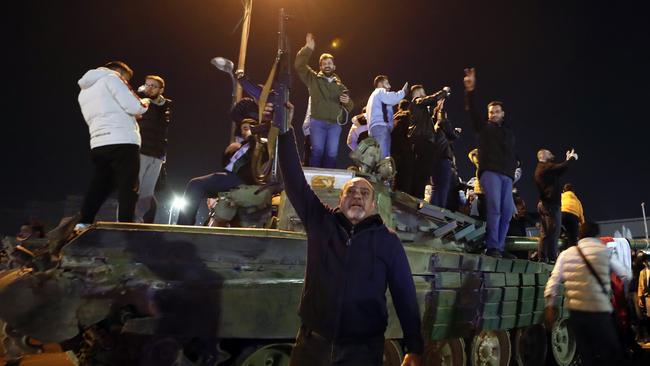
Syria’s armed opposition declared Damascus “free of the tyrant Bashar al-Assad” and immediately released 3500 prisoners from the notorious Sednaya prison, where Assad’s regime had tortured and executed political opponents.
Syria’s state television begun broadcasting a bold red strapline announcing: “The victory of the great Syrian revolution and the fall of the criminal al-Assad regime”.
British Deputy Prime Minister Angela Rayner welcomed Assad’s fall and called for a political resolution.
She said Assad “wasn’t exactly good to the Syrian people”, and called for a political solution in line with UN resolutions where the government is acting in the interests of the Syrian people.
“We need to see civilians and infrastructure protected, far too many people have lost their lives, we need stability in that region,” she told Sky News.
Within Syria, Mazloum Abdi, the commander of the Syrian Democratic Forces, the US-backed, Kurdish-led military force controlling much of Syria’s north east hailed “the fall of the authoritarian regime in Damascus”.
“In Syria we are living through historic moments as we witness the fall of the authoritarian regime in Damascus,” he said.
“This change presents an opportunity to build a new Syria based on democracy and justice that guarantees the rights of all Syrians”.
Iraq has evacuated its embassy in Damascus fearing reprisals for allowing about 2000 of Assad’s army soldiers, as well as another 700 Syrian government employees to flee into Iraq earlier on the weekend. By Sunday Iran closed its border with Syria and beefed up security at the border crossing.
While the immediate leadership of Syria remains uncertain, an arm of the Syrian opposition called the Administration of Political Affairs says it wants a peaceful transition. “The liberated Syria looks to deepen ties with all the brotherly and friendly nations on the basis of mutual respect and interests,” it said in a statement.
“We will aim to play a constructive role in the region and the world to achieve security and stability. The liberation of Syria is a victory for all of its children who have sacrificed for the unity of its land and people.”
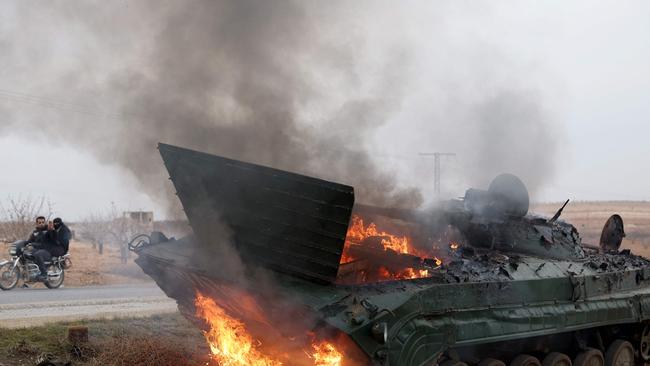
In the tangled web of Syrian rebel groups, HTS emerged as the most dominant in Idlib in recent years after it broke away from al-Qaeda and shook off its former name, Jabhat al-Nusra, and merged with similar Islamist rebel factions. It had concentrated its power in the northwest of Syria with force and began imposing a fundamentalist Islamic rule even while Assad remained in power after a 2020 peace deal to end the civil war brokered by Russia and Turkey.
Bashar al-Assad, a former medical student, had inherited control of Syria from his father, who ruled Syria from 1971 until 2000. Assad cracked down on the 2014 Arab Spring uprisings with fierce force, including using chemical weapons in the resulting civil war. Millions of Syrians fled the country while hundreds of thousands of fighters died but it had appeared he had a tenuous hold on power, until now.




To join the conversation, please log in. Don't have an account? Register
Join the conversation, you are commenting as Logout